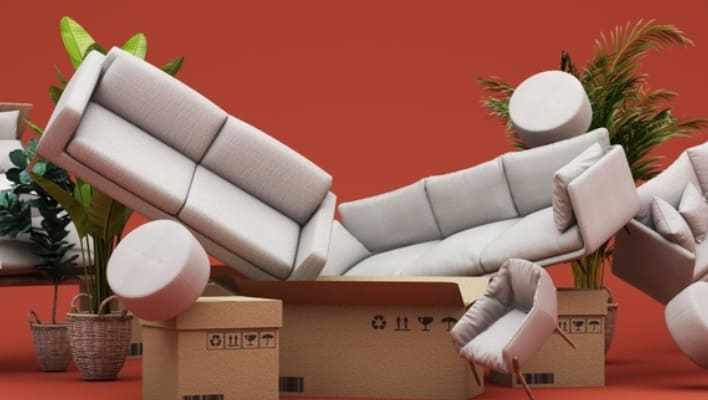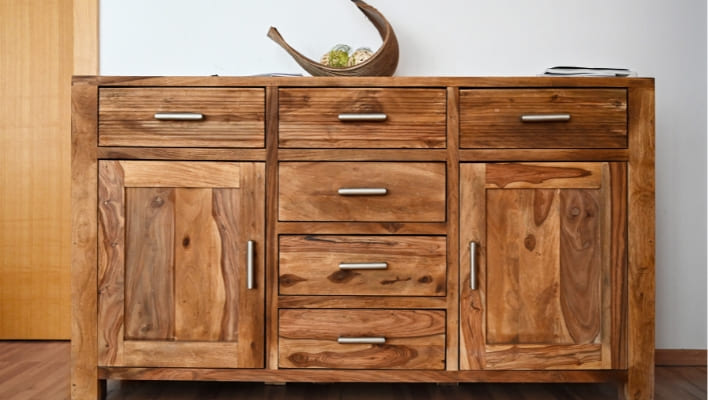Preventing mold on wooden furniture is not only visually displeasing but also carries potential health risks. Whether it’s a consequence of unexpected events like flooding or a result of gradual wear and tear, dealing with mold requires attention and care. From understanding different mold types to exploring their impact on your health and home, we’ve got you covered.
In this article, we’ll delve into the various challenges posed by mold on wooden surfaces and explore effective strategies to not only eliminate it but also safeguard your cherished furniture from future infestations.
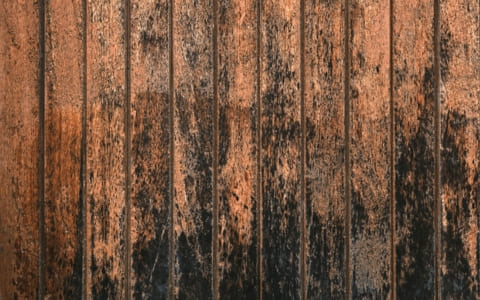
Table of Contents
- Why is my wooden furniture going mouldy?
- Porous Nature of Wood:
- Excessive Moisture
- Inadequate Ventilation:
- Temperature Range:
- Limited Sunlight Exposure:
- Wood as a Substrate
- What Are the Different Types of Wood Mold?
- Is mold harmful to wood?
- How to clean mold off wood furniture?
- removing mold from wood with vinegar
- Washing Up Liquid:
- Mould Removal Products:
- Hydrogen Peroxide: (Best mold killer for wood)
- Ammonia-Free Mold Cleaning Solution (Bleach):
- Concrobium 25326 Mold Control Spray, 32 oz
- How to prevent mold on furniture?
- Mold Assessment:
- Protection before treat mold on wood furniture
- Ventilation to Get rid Of Mold:
- Containment:
- Remove Clutter:
- Moisture Control:
- Prepare Mold Cleaning Solutions:
- Tools and Supplies for treating mold:
- Communication:
- Plan for Disposal:
- What can I spray on wood to prevent mold?
- What kills 100% of mold?
- What sealant should I use on wood to remove mold
- How do you permanently remove fungus from wood?
- Why does mold grow on my furniture but not on the walls?
- Conclusion:
- Rosalie Sanchez
Why is my wooden furniture going mouldy?
I’ve observed mold growth on my wood furniture, and it’s a common issue influenced by several factors. Here are the reasons I’ve noticed for mold on furniture;
Porous Nature of Wood:
Wood’s porous structure provides a favorable environment for mould growth. Its tiny openings create spaces where mould spores can settle and thrive.
Excessive Moisture
Mold thrives in damp conditions, and wood, being porous, easily absorbs moisture. Exposure to high humidity or wet environments creates an ideal breeding ground for mold on wooden surfaces.
Inadequate Ventilation:
Insufficient air circulation around furniture can lead to the accumulation of moisture. Proper ventilation is crucial for allowing wood to dry effectively and preventing mold growth.
Temperature Range:
Mold tends to flourish in temperatures ranging from 77°F to 86°F (25°C to 30°C). When furniture is situated in environments within this temperature range, it becomes more susceptible to mold development.
Limited Sunlight Exposure:
Sunlight has natural mold-inhibiting properties. Furniture placed in shaded or poorly lit areas is more prone to mold growth, as it lacks the preventive effects of sunlight.
Wood as a Substrate
Wood, being an organic material, provides nutrients for mold. Combined with favorable conditions such as warmth and moisture, mold spores readily settle and proliferate on wooden surfaces.
What Are the Different Types of Wood Mold?
| Type of Wood Mold | Characteristics | Prevalent Colors | Preferred Conditions |
| White Rot | – Whitish or light color | White | Damp conditions, breaks down lignin and cellulose |
| Brown Rot | – Brown and cracked appearance | Brown | Primarily affects coniferous wood, breaks down cellulose |
| Soft Rot | – Softening of wood surface without major discoloration | – | Wood in contact with damp soil, high-moisture environments |
| Wet Rot | – Softens wood, often with a musty odor | – | Thrives in continuously damp conditions |
| Dry Rot | – Thrives in poorly ventilated, damp areas | – | Leads to shrinking and cracking of affected wood |
| Slime Flux | – Slimy, foul-smelling ooze on wood surface | – | Bacterial infection, enters through wounds in tree bark |
| Mold and Mildew | – Surface fungi with black, green, or white spots | Black, Green, White | High humidity, lack of sunlight |
| Blue Stain Fungi | – Causes bluish or grayish discoloration in wood | Blue, Gray | Affects softwood species, doesn’t necessarily weaken the wood |
| Black Mould | – Dark black or greenish-black appearance | Black | Thrives in damp and humid environments, often on porous materials |
| Green Mould | – Greenish appearance | Green | Flourishes in high humidity and organic matter |
Is mold harmful to wood?
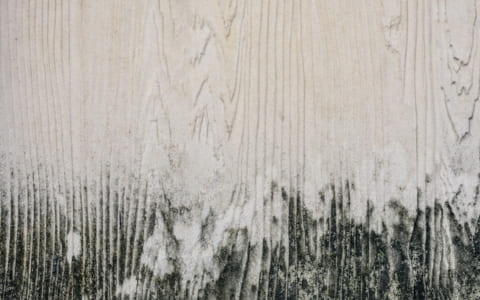
Mold is not good, especially for wood. It’s a big issue. It loves moisture, and if it grows, it eats away at the wood, making it weak and even causing it to rot. This can seriously damage your home.
People exposed to mold might experience things like a stuffy nose, coughing, or a rash. For people with asthma or allergies, it can make things even worse. If someone’s immune system is not strong or they have lung problems, mold can lead to infections in their lungs.
If you ignore mold on wood, it doesn’t just stay in one place; it can spread to other parts of your home, causing more damage. So, it’s important to deal with mold to keep your home safe and healthy.
How to clean mold off wood furniture?
People often ask, What actually kills mold?
To address mold issues, you have the option to utilize everyday household and other organic items that are both safe and effective. Here are the best home remedy for removing mold on wood;
removing mold from wood with vinegar
Distilled white vinegar is a natural and powerful solution to get rid of mold instantly and stop it from coming back. I frequently use this solution; it works well on various surfaces, including wood, and effectively addresses lighter mold issues.
Washing Up Liquid:
It might sound surprising, but washing up liquid can work well on painted or stained wood with surface mold. It’s an easy-to-find solution for dealing with mold on these surfaces.
Mould Removal Products:
There are specific mold removal products designed to kill mold rather than just clean it. These products, available in stores and online, are formulated to provide effective mold elimination and may also offer preventive measures against regrowth.
Hydrogen Peroxide: (Best mold killer for wood)
I’ve find out that hydrogen peroxide, while not as common as some products, works wonders for killing mold in porous surfaces like wood. Its ability to get into the wood tackles mold from the surface all the way inside.
Ammonia-Free Mold Cleaning Solution (Bleach):
I’ve also given the ammonia-free mold cleaning solution a try, and it’s been another fantastic option. I mixed 1 part bleach with 9 parts water to prepare it. Spraying this solution on the mold and mildew, letting it sit for 10 minutes, and then giving it a good scrub and rinse has proven to be quite effective.
Of course, it is important to make sure the area is well-ventilated, and I always make sure to wear protective gear when dealing with bleach.
Concrobium 25326 Mold Control Spray, 32 oz
You can also use Concrobium Mold Control Spray which is an effective solution for eliminating mold and musty odors while preventing regrowth. This EPA-registered formula not only eradicates mold spores but also creates an invisible barrier as it dries. This dual action makes it a reliable choice for mold control and prevention.
How to prevent mold on furniture?
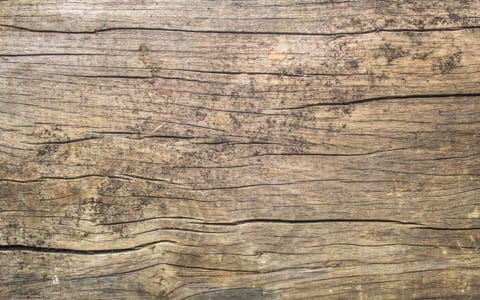
Mold Assessment:
Begin by carefully inspecting areas for mold, identifying both visible signs and musty odors. Examining the situation initially helps figure out how much mold there is to deal with.
Protection before treat mold on wood furniture
Prioritize safety by wearing protective gear such as gloves, a mask, and safety glasses to minimize exposure to mold spores during the removal process.
Ventilation to Get rid Of Mold:
Ensure proper ventilation in the affected area by opening windows and doors. This helps disperse both mold spores and any fumes from cleaning agents.
Containment:
If possible, isolate the affected area using plastic sheeting. This containment prevents the spread of mold spores to other parts of the living space.
Remove Clutter:
Clear the space of unnecessary items to facilitate easier access during the cleaning process and ensure a more effective removal of mold.
Moisture Control:
Address the source of moisture promoting mold growth. Fixing leaks or lowering humidity becomes necessary to stop mold from coming back.
Prepare Mold Cleaning Solutions:
Choose an appropriate mold cleaning solution, whether commercial or DIY. This might include solutions involving vinegar, baking soda, or bleach, depending on the situation.
Tools and Supplies for treating mold:
Gather essential cleaning tools like scrub brushes, sponges, and cloths. Also, have garbage bags on hand for the disposal of contaminated materials.
Communication:
Inform others sharing the living space about the mold removal process and any precautions they need to take to minimize exposure.
Plan for Disposal:
Decide on the proper disposal method for contaminated materials in accordance with local regulations. This ensures a thorough and responsible cleanup process.
What can I spray on wood to prevent mold?
To safeguard wood from mold, you can use a blend of equal parts white vinegar and water in a spray bottle. Gently spray the mixture on the wood surface, allowing it to dry completely. The natural antifungal properties of vinegar help inhibit the growth of mold. It’s essential to maintain good ventilation and control humidity to further prevent mold on wood. Regular cleaning is essential to keep your space free from mold.
What kills 100% of mold?
I’ve tested both cleaning vinegar, which has 6% acetic acid, and regular white vinegar with 5% acidity. They’re readily available, easy to use, and extremely effective, ensuring a 100% kill rate for mold. Additionally, a bleach solution of 1 cup laundry bleach per gallon of water works wonders on surfaces without exceeding this concentration.
What sealant should I use on wood to remove mold
When addressing wood mold issues, you have the choice between water-based polyurethane and oil-based polyurethane sealants. The oil-based variant requires more drying time but fewer coats. Keep in mind that it has higher VOCs compared to water-based polyurethane. For effective outcomes, you may want to consider products like Rainguard Premium Wood Sealer or Ready Seal Stain and Sealer for Wood.
How do you permanently remove fungus from wood?
To permanently eliminate wood fungus, utilize a spray bottle filled with vinegar. To tackle mold, use vinegar by spraying it on the affected area. Let it sit for about an hour to effectively address the issue.
After that, wipe down the wood with a clean, damp towel. Inspect the wood for any lingering mold, and if none is apparent, give it a final wipe using a dry rag. This approach harnesses the natural antifungal properties of vinegar to effectively combat and remove the fungal presence.
Why does mold grow on my furniture but not on the walls?
Mold on furniture, rather than walls, is often a result of restricted air circulation in a cluttered home. When living spaces are densely packed with items and furniture is surrounded by various objects, proper air movement becomes challenging.
Furniture that comes into contact with water leaks, spills, or flooding can absorb moisture, creating conditions favorable for mold growth if not adequately dried. Regions with high humidity levels contribute to saturated indoor air, further encouraging mold development on the surfaces of furniture.
Conclusion:
In conclusion, to prevent mold on wood furniture, it’s crucial to maintain a dry environment, address water leaks promptly, and ensure proper ventilation. Regular inspections and quick action can significantly contribute to the long-term protection of your wooden furniture against mold growth.

Rosalie Sanchez
DIY enthusiast with years of experience in home decor and home improvement. With a passion for educating consumers about DIY projects. Every time, I work with our painting professionals to provide you with the best painting product reviews and how-to advice. You can follow me on Facebook.

